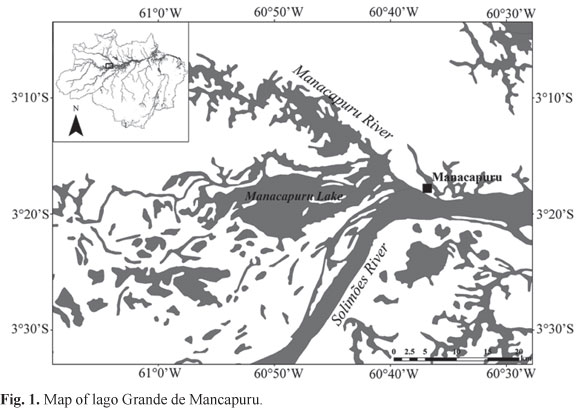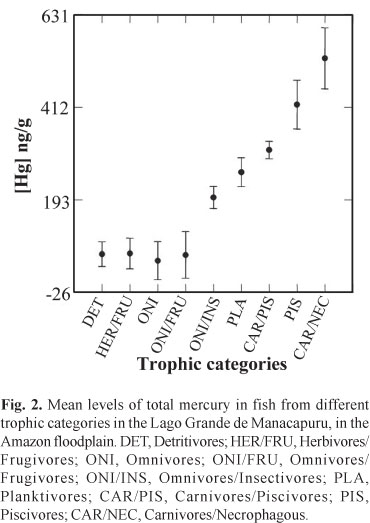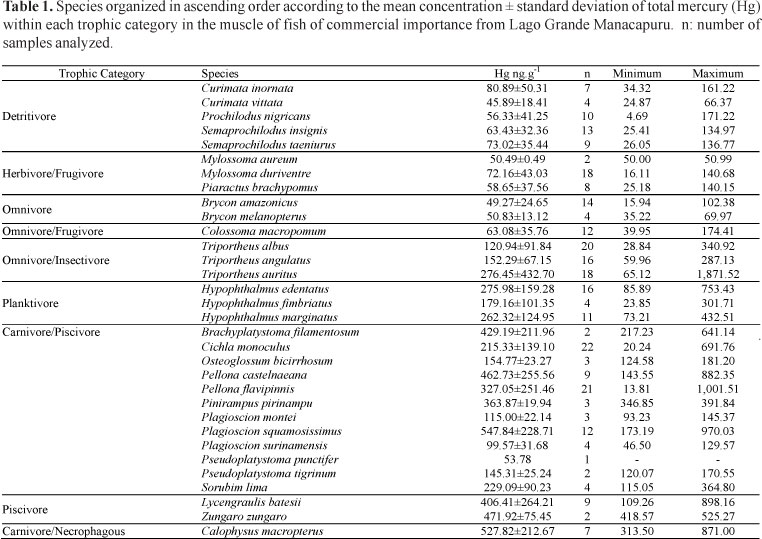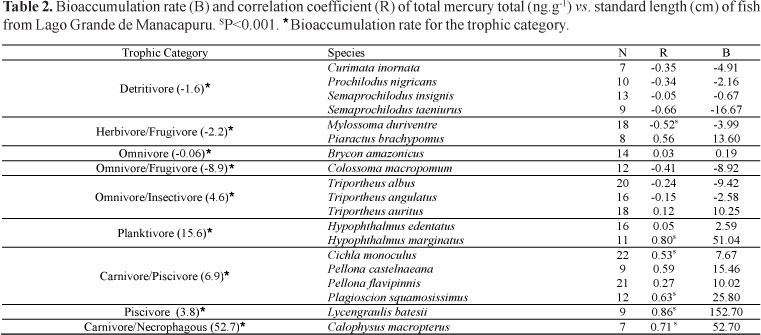Thirty-two species of commercially important fish from three trophic levels and nine trophic categories were sampled at a floodplain lake of the Solimões River (Lago Grande de Manacapuru). The fish were analyzed to determine their Hg level and the bioaccumulation, bioconcentration, and biomagnification of this element. The observed increase in mean concentration of mercury (49.6 ng.g-1 for omnivores, 418.3 ng.g-1 for piscivores, and 527.8 ng.g-1 for carnivores/necrophages) furnished evidence of biomagnification. Primary, secondary, and tertiary consumers presented biomagnification factors of 0.27, 0.33, and 0.47, respectively. Significant differences in the bioconcentration and concentration of total Hg occurred between the categories of the third trophic level and the other categories. Plagioscion squamosissimus (carnivorous/piscivorous) and Calophysus macropterus (carnivorous/ necrophagous) showed levels of total Hg above those permitted by Brazilian law (500 ng.g-1). Six other species also posed risks to human health because their Hg levels exceeded 300 ng.g-1. Fifteen species showed bioaccumulation, but only eight presented significant correlations between the concentration of Hg and the length and/or the weight of the fish.
Biomagnification; Ecotoxicology; Fish quality; Floodplain; Mercury contamination





